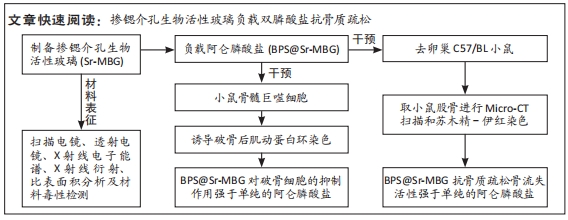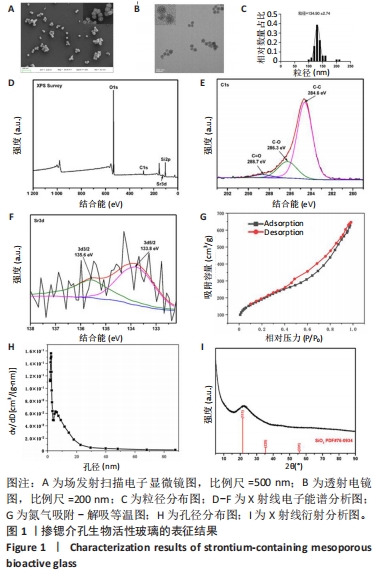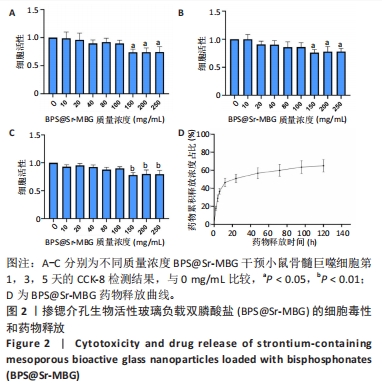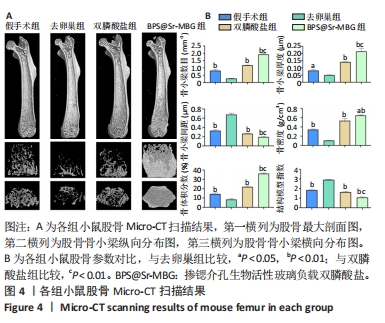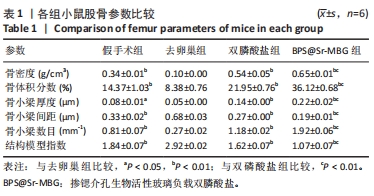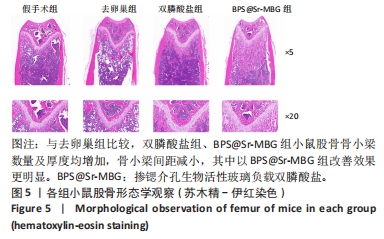[1] AYERS C, KANSAGARA D, LAZUR B, et al. Effectiveness and Safety of Treatments to Prevent Fractures in People With Low Bone Mass or Primary Osteoporosis: A Living Systematic Review and Network Meta-analysis for the American College of Physicians. Ann Intern Med. 2023;176(2):182-195.
[2] ARCEO-MENDOZA RM, CAMACHO PM. Postmenopausal Osteoporosis: Latest Guidelines. Endocrinol Metab Clin North Am. 2021;50(2):167-178.
[3] ZHANG S, HUO S, LI H, et al. Flufenamic acid inhibits osteoclast formation and bone resorption and act against estrogen-dependent bone loss in mice. Int Immunopharmacol. 2020;78:106014.
[4] KIM JM, LIN C, STAVRE Z, et al. Osteoblast-Osteoclast Communication and Bone Homeostasis. Cells. 2020;9(9):2073.
[5] SIDDIQUI JA, PARTRIDGE NC. Physiological Bone Remodeling: Systemic Regulation and Growth Factor Involvement. Physiology (Bethesda). 2016;31(3):233-245.
[6] SONG S, GUO Y, YANG Y, et al. Advances in pathogenesis and therapeutic strategies for osteoporosis. Pharmacol Ther. 2022;237:108168.
[7] DA W, TAO L, ZHU Y. The Role of Osteoclast Energy Metabolism in the Occurrence and Development of Osteoporosis. Front Endocrinol (Lausanne). 2021;12:675385.
[8] ERIKSEN EF. Cellular mechanisms of bone remodeling. Rev Endocr Metab Disord. 2010;11(4):219-227.
[9] MCNAMARA LM. Osteocytes and Estrogen Deficiency. Curr Osteoporos Rep. 2021;19(6):592-603.
[10] WU D, CLINE-SMITH A, SHASHKOVA E, et al. T-Cell Mediated Inflammation in Postmenopausal Osteoporosis. Front Immunol. 2021;12:687551.
[11] YU B, WANG CY. Osteoporosis and periodontal diseases - An update on their association and mechanistic links. Periodontol 2000. 2022;89(1):99-113.
[12] KRUEGER CD, WEST PM, SARGENT M, et al. Bisphosphonate-induced osteonecrosis of the jaw. Ann Pharmacother. 2007;41(2):276-284.
[13] KHOSLA S, BILEZIKIAN JP, DEMPSTER DW, et al. Benefits and risks of bisphosphonate therapy for osteoporosis. J Clin Endocrinol Metab. 2012;97(7): 2272-2282.
[14] LEWIECKI EM. Safety of long-term bisphosphonate therapy for the management of osteoporosis. Drugs. 2011;71(6):791-814.
[15] BLACK DM, KELLYMP, GENANT HK, et al. Bisphosphonates and fractures of the subtrochanteric or diaphyseal femur. N Engl J Med. 2010;362(19):1761-1771.
[16] GODDARD MS, REID KR, JOHNSTON JC, et al. Atraumatic bilateral femur fracture in long-term bisphosphonate use. Orthopedics. 2009;32(8). doi: 10.3928/ 01477447-20090624-27.
[17] MASHIBA T, HIRANO T, TURNER CH, et al. Suppressed bone turnover by bisphosphonates increases microdamage accumulation and reduces some biomechanical properties in dog rib. J Bone Miner Res. 2000;15(4):613-620.
[18] LI J, MASHIBA T, BURR DB. Bisphosphonate treatment suppresses not only stochastic remodeling but also the targeted repair of microdamage. Calcif Tissue Int. 2001;69(5):281-286.
[19] DAMIAN-BUDA AI, GHIȚULICĂ CD, CUCURUZ A, et al. Mesoporous Bioactive Glass Nanoparticles in the SiO(2)-P(2)O(5)-CaO-MO (M=Mg, Zn) System: Synthesis and Properties. J Funct Biomater. 2022;13(4):180.
[20] GUPTA S, MAJUMDAR S, KRISHNAMURTHY S. Bioactive glass: A multifunctional delivery system. J Control Release. 2021;335:481-497.
[21] SCHUMACHER M, HABIBOVIC P, VAN RIJT S. Mesoporous bioactive glass composition effects on degradation and bioactivity. Bioact Mater. 2021;6(7):1921-1931.
[22] GUDURIC V, BELTON N, RICHTER RF, et al. Tailorable Zinc-Substituted Mesoporous Bioactive Glass/Alginate-Methylcellulose Composite Bioinks. Materials (Basel). 2021;14(5):1225.
[23] MUNIR A, MAROVIC D, NOGUEIRA LP, et al. Using Copper-Doped Mesoporous Bioactive Glass Nanospheres to Impart Anti-Bacterial Properties to Dental Composites. Pharmaceutics. 2022;14(10):2241.
[24] ANAND A, SENGUPTA S, KAŇKOVÁ H, et al. Influence of Copper-Strontium Co-Doping on Bioactivity, Cytotoxicity and Antibacterial Activity of Mesoporous Bioactive Glass. Gels. 2022;8(11):743.
[25] KOŁODZIEJSKA B, STĘPIEŃ N, KOLMAS J. The Influence of Strontium on Bone Tissue Metabolism and Its Application in Osteoporosis Treatment. Int J Mol Sci. 2021;22(12):6564.
[26] BANCHE-NICLOT F, CORVAGLIA I, CAVALERA C, et al. Optimization of an Injectable, Resorbable, Bioactive Cement Able to Release the Anti-Osteoclastogenic Biomolecule ICOS-Fc for the Treatment of Osteoporotic Vertebral Compression Fractures. Biomolecules. 2023;13(1):94.
[27] LEE JH, MANDAKHBAYAR N, EL-FIQI A, et al. Intracellular co-delivery of Sr ion and phenamil drug through mesoporous bioglass nanocarriers synergizes BMP signaling and tissue mineralization. Acta Biomater. 2017;60:93-108.
[28] BANO S, AKHTAR M, YASIR M, et al. Synthesis and Characterization of Silver-Strontium (Ag-Sr)-Doped Mesoporous Bioactive Glass Nanoparticles. Gels. 2021; 7(2):34.
[29] ZHAO M, CHEN G, ZHANG S, et al. A bioactive poly(ether-ether-ketone) nanocomposite scaffold regulates osteoblast/osteoclast activity for the regeneration of osteoporotic bone. J Mater Chem B. 2022;10(42):8719-8732.
[30] BOSE S, VU AA, EMSHADI K, et al. Effects of polycaprolactone on alendronate drug release from Mg-doped hydroxyapatite coating on titanium. Mater Sci Eng C Mater Biol Appl. 2018;88:166-171.
[31] DE FARIA LP, SUEYOSHI G, DE OLIVEIRA TC, et al. Effects of Alendronate and Dexamethasone on Osteoclast Gene Expression and Bone Resorption in Mouse Marrow Cultures. J Histochem Cytochem. 2022;70(2):169-179.
[32] WANG S, MA Q, XIE Z, et al. An Antioxidant Sesquiterpene Inhibits Osteoclastogenesis Via Blocking IPMK/TRAF6 and Counteracts OVX-Induced Osteoporosis in Mice. J Bone Miner Res. 2021;36(9):1850-1865.
[33] WU Q, HU L, YAN R, et al. Strontium-incorporated bioceramic scaffolds for enhanced osteoporosis bone regeneration. Bone Res. 2022;10(1):55.
[34] HAIDER A, WASEEM A, KARPUKHINA N, et al. Strontium- and Zinc-Containing Bioactive Glass and Alginates Scaffolds. Bioengineering (Basel). 2020;7(1):10.
[35] JING D, LI F, JIANG M, et al. Pulsed electromagnetic fields improve bone microstructure and strength in ovariectomized rats through a Wnt/Lrp5/β-catenin signaling-associated mechanism. PLoS One. 2013;8(11):e79377.
|
